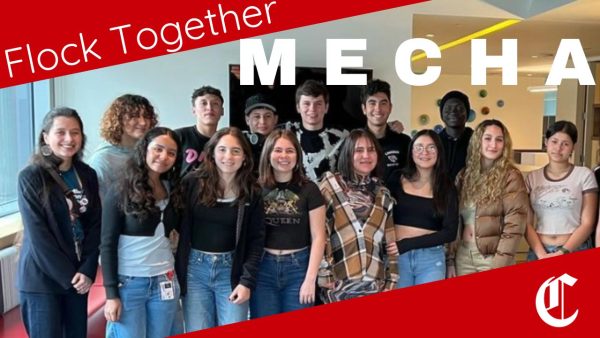Lincoln indoor lunch plan sparks discussion
Principal Chapman walks around crowds of students during indoor lunch. The efficacy of these indoor lunches are challenged by Lincoln students.
When designers of the 1950s constructed the Lincoln building we have today, they accounted for the possibility of nuclear war with a fallout shelter. For fire safety they included fire extinguishers and alarms. It’s unlikely they considered the complications of eating lunch during a global pandemic.
The Centers for Disease Control and Prevention (CDC) gives no recommendations for what should be done when students are eating and unmasked— leaving school administrators to solve the problem themselves. So perspectives vary on what is needed to keep students safe.
Last month, Principal Peyton Chapman encouraged students to eat outside whenever possible, but announced that students would be able to eat inside during inclement weather, under the condition that students would socially distance themselves six feet apart.
However, some observe these rules simply as a suggestion.
“[Many] people were huddling together at lunch— definitely not six feet apart, clearly just wanting it to be how it was before, when we used to eat inside,” biology teacher Maureen Kenny said.
Many of the science teachers have been trying to remind students to socially distance, but Kenny thinks it still needs work.
“We need our expectations to be very clear, signage, nice reminders saying, ‘Here are some other places you can eat safely,’ things like that,” she said.
To Kenny, however, even if students were socially distanced, problems would still arise.
“We want everyone to feel comfortable here,” she said. “One of my problems is that students are standing in the middle of the hall. Regardless of being six feet apart, how can people be COVID-safe when they walk down the hall?”
Even with all the troubles, Kenny still thinks there’s a way the administration can reach a solution.
“I think there are ways to have people in the building safely,” she said. “Kids won’t be able to eat the way they want to, in a little cluster with their friends, they’re going to have to spread out sometimes.”
Sophomore Lydia Levy shares a different perspective. She believes the current COVID protocols in place are safe enough as is.
“I think what [the administration] is doing is pretty safe, keeping us spaced out. Is it an inconvenience? Yes. But does it make us safe? Also yes. I think it protects us to a certain extent,” she said.
Levy also shared insight into why so many students are eating inside, even when the option to eat outside is available.
“I feel like a fair amount of students eat inside [because eating outside] is just gross, [especially when it’s raining,]” she said. “You don’t want to get wet, because then you’d be wet the entire day. It’s just not the optimal experience.”
Levy believes that spacing between groups is more important than between individuals.
“The people that we’re sitting with at lunch are the people that we’re hanging out with outside of school,” she said. “So your little group is already all over each other without masks, anyway. Making them spread out seems kind of pointless.”
Despite believing the administration could loosen up some of the COVID guidelines, Levy understands the importance of social distancing, especially inside a building or tight hallway.
“[Social distancing] is a little extreme, but I do get it. It’s for safety,” she said.
If the administration is planning on keeping the current guidelines, discussion will continue in the coming months as fall and winter weather looms ahead.











